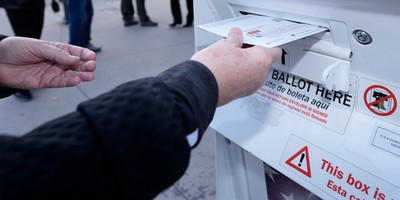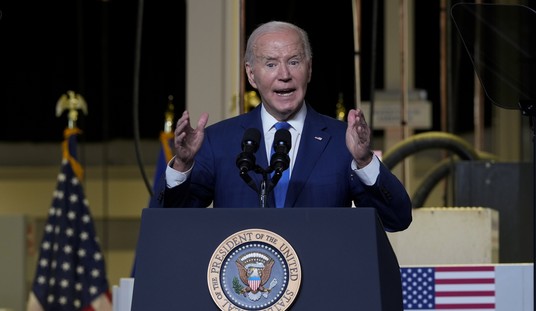If you don’t live in Washington, New York, or another big city, you may think: “Even if the terrorists do strike again on American soil, my hometown and my family probably aren’t in danger.” Think again.
In 2001 the U.S. government established a commission to “assess the threat to the United States from Electromagnetic Pulse (EMP) attack.” The commission recently reported to Congress that if a nuclear warhead were to be detonated at high altitude over the American mainland the blast would produce an EMP — a shockwave so powerful that it would “cripple military and civilian communications, power, transportation, water, food, and other infrastructure.”
Lights would go out. Telecommunications would fail. Computers would crash. Bank accounts would disappear. The stock market would cease operation. Refrigerated food warehouse would shut down. Sanitation and emergency services would be crippled.
Before long, millions of Americans would, as the Wall Street Journal flatly phrased it, “die of starvation or want of medical care.” It would require months or even years for America to climb out of the pre-industrial hole into which it had been flung.
Any number of terrorists groups would be proud to carry out such an attack. But, as the EMP commission also reported, only Iran (1) is attempting to develop nuclear weapons; (2) has recently conducted multiple missile tests of its nuclear-capable Shahab-3 missiles; (3) has done so from cargo ships in the Caspian Sea; and (4) also has detonated those missiles at high altitude. What’s more, the CIA has translated Iranian military journals in which EMP attacks against the U.S. are explicitly discussed.
Ilan Berman, vice president of the American Foreign Policy Council and a member of the Committee on the Present Danger, comments: “Iran's interest in developing EMP capabilities suggests that in the near future, Iran could be able to carry out an asymmetric attack involving a mid-air nuclear detonation.”
Recommended
Capability is one thing. Intention is another. Or is it? Iranian President Mahmoud Ahmadinejad has said: “The time for the fall of the satanic power of the United States has come and the countdown to the annihilation of the emperor of power and wealth has started.” He has added: “A world without the United States . . . can be achieved.”
An EMP attack would achieve that goal most rapidly because it would require only one nuclear weapon, and by using a ship as the launch pad, it would obviate the need for very long-range missiles (which Iran has not yet acquired).
You may be thinking: “Ahmadinejad and his mullah masters wouldn’t dare! They must know the destruction we’d rain on them in response.” First, those who believe — as, for example, Islamist suicide-bombers do — that death in a war against infidels leads to martyrdom and heavenly rewards cannot be deterred. For them, as Middle East scholar Bernard Lewis has observed, “mutually assured destruction in not a deterrent — it is an inducement.”
Second, if such an attack were launched from a ship off the U.S. coast — and that ship were, say, registered in Liberia and crewed by Hezbollah terrorists from Lebanon — assigning blame conclusively would be no simple matter.
So what can be done? It would help if Iran were to be prevented — by whatever means — from acquiring nuclear weapons. Failing that, the EMP threat surely adds to the arguments in favor of missile defense.
It is not impossible for the U.S. to have a system in place that would destroy missiles after launch and before they reach their targets. Critics say we don’t yet have the technology to guarantee that missile defense would work. But if the choice is between a 70-percent chance of stopping a nuclear-tipped missile and a 0-percent chance, which would you prefer? And further research and development on missile defense systems — including land-based, sea-based, and space-based components — can better the odds over time.
In 1983, Islamist terrorists used a truck and explosives to slaughter 241 U.S. Marines in their barracks in Beirut. In 1993, Islamists terrorists used a truck and explosives in an attempt to bring down the World Trade Center in New York.
The terrorists learned from those experiences — America’s political leaders did not. They failed to imagine or prepare for what the terrorists might do next — what the terrorists did do on September 11, 2001.
Given this history, you might think we would never make such a mistake again. But Sen. Barack Obama has said that, if he is elected president, he will cut off all missile-defense funding. Think of that what you will.

























Join the conversation as a VIP Member